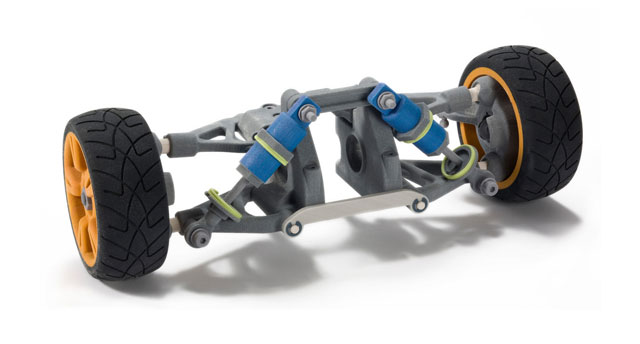
It is the stuff of science-fiction — implants for the human body, matching a recipient’s dimensions exactly and printed from titanium powder, much like the way an inkjet printer reels off a document. This is the world that 3D printing, also known as additive manufacturing, is making possible — and it is no longer the stuff of B-grade cult films.
In the Netherlands last year, an 83-year-old woman received a jaw implant created with 3D printing. At the Nemours/Alfred I duPont Hospital for Children in the American state of Delaware, it has been used to make robotic exoskeletons for children with a rare disorder that affects joint and muscle development. In other places in the US and Europe, the technology is being used to tailor-make hearing aids and dental implants, and the global scientific community is exploring the possibility that it will be able to print viable human tissue one day.
Although we’re still decades away from printing human organs on demand, additive manufacturing is revolutionising the way we build and design everything from aircraft to cars, and it has serious implications for the amount of resources we use, as well as for entire production cycles.
Additive manufacturing is different from conventional or subtractive manufacturing, according to Hardus Greyling, operations manager of the National Laser Centre at the Council for Scientific and Industrial Research (CSIR), where he works on laser materials processing.
Conventional manufacturing begins with a billet of material that is then milled into a product or component. Additive manufacturing uses a 3D model of a product, developed with the use of computer-aided design (CAD) software. The design is fed into a 3D printer, which prints the object, layer by layer. Each sliver is fused together, using a heat source such as a laser, until the component is fully formed.
Greyling said there was a wide range of technologies that supported additive manufacturing, the most common involving a plastic material but others, such as metal and rubber, could also be used.
Off-the-shelf 3D printers can be bought for between R10 000 and R15 000 that people can use to make things at home. It’s a simple matter of getting the hang of the software.
Hobbyists have blossomed the world over, using websites such as thingiverse.com to share 3D designs and ideas. Need an iPhone holder for your car? Print it out. With the right software, such as OpenSCAD, and a little know-how, you can print your own Christmas decorations, a clutch purse, a new lampshade, a roll-top toolbox or a skull-shaped ashtray.
In South Africa, companies such as CAD House supply the equipment from the US-based 3D-Systems, one of the world’s largest firms in this field, for both hobbyists and local industry. Other large global companies include Stratasys, recently formed by the merger of US-based Stratasys and Israeli-based Objet.
In the commercial realm, additive manufacturing has revolutionised how prototypes for many industries are designed and made. It uses far less material and allows for design variations and advancements that ordinary manufacturing does not.
The CSIR is concentrating on applications of this technology in the aerospace industry and, in partnership with South African aerospace company Aerosud and Airbus, the organisation is developing the world’s largest and fastest 3D-printer to manufacture aircraft components using titanium. The project will enable the 3D printing of components up to two metres in length.
As the world’s second largest titanium supplier, work such as this represents a major beneficiation opportunity for the country. The additive manufacturing process might be more expensive but, in the long term, it can result in large savings. Conventional manufacturing can result in the loss of 90% of the material to make one product. But additive manufacturing uses the exact amount of material needed and, given the design modifications that are possible, stronger and lighter components can be made.
The process also has implications for manufacturing logistics and supply chains. Instead of storing warehouses full of parts for different vehicle makes and models, Greyling said that vehicle manufacturers could one day store all the designs electronically — car manufacturers would only need to “print” the spares when they were needed.
Forbes magazine reported earlier this year how TV star Jay Leno uses a 3D printer to make rare parts for his classic car collection. One enterprising New Zealand academic, Olaf Diegel, has created 3D-printed electric guitars.
It looks as if a world where everything from hearts to cars can be made at the touch of a button may not be so far away. Beam us up, Scotty! Or is that print me up a Starship Enterprise? — (c) 2013 Mail & Guardian
- Visit the Mail & Guardian Online, the smart news source
- Image courtesy of Creative Tools




